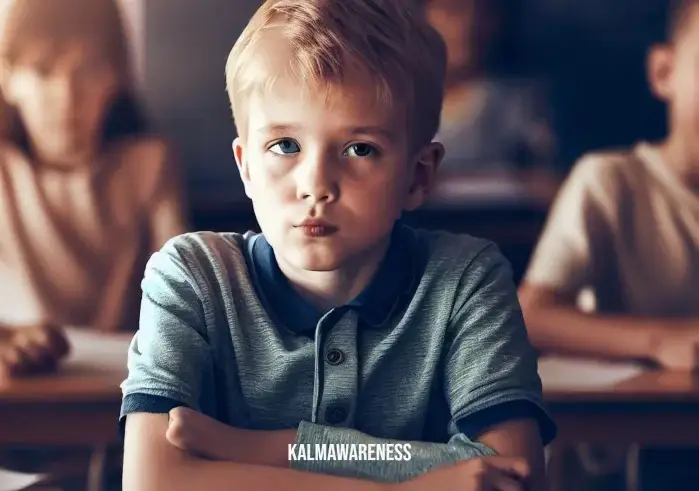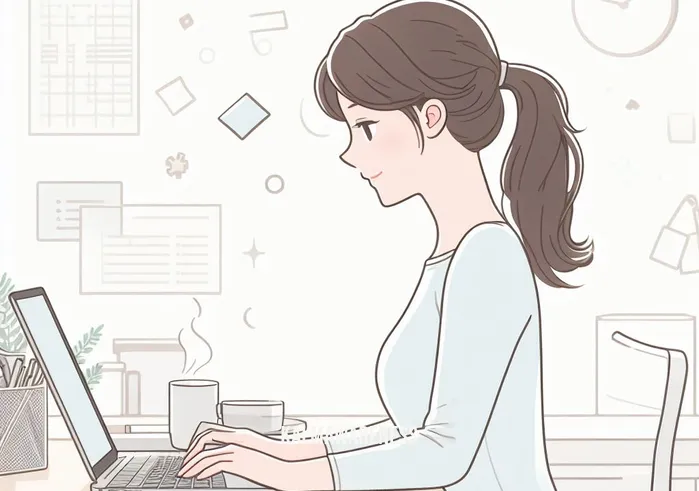My Inner Child is Screaming: Awakening Playfulness and Healing the Wounds Within
“My inner child is screaming.“ If you’ve ever found yourself whispering these words, you’re not alone. In this journey, we’ll explore the deep, sometimes tumultuous waters of emotional exploration, seeking understanding, and ultimately, healing.
The Shriek of the Inner Child
Often, when our inner child is screaming, it’s a sign of unaddressed pain, emotional distress, or past trauma. This wounded facet of our personality is crying out for attention, yearning for resolution.
“When we ignore our inner child, its voice only grows louder and more disruptive.“
But how do we begin to address this cry for help? We start by acknowledging its existence. Many of us tend to repress this voice, believing it to be a sign of immaturity. However, such an assumption couldn’t be further from the truth.
To engage with our inner child isn’t a regression into infancy; rather, it’s a courageous step towards emotional healing.
Trauma: The Root of the Shriek
Understanding that our inner child might be acting out due to past trauma is a pivotal part of the healing journey. After all, as a wise saying goes, “what we resist, persists.” Thus, embracing our past and recognizing how our trauma made us stronger is a crucial starting point.
By acknowledging our trauma, we open the door to healing. We begin to see that our inner child’s screaming is not a weakness, but a signal for attention, a sign that something within us desires resolution.
Healing Through Self-Compassion
Addressing our inner child’s pain is not a task we should undertake lightly or without guidance. It requires deep self-compassion and a gentle approach. As we feed ourselves a self-compassion diet, we create a safe space for healing, expressing our emotions, and reconnecting with our inner selves.
Self-compassion allows us to treat our wounds with kindness, enabling us to gradually heal. While this process may be challenging, it is also deeply rewarding. The transformation that comes with healing our inner child can result in an immense feeling of liberation and peace.
Embracing the Inner Child: An Invitation to Play
Our inner child isn’t all about pain and trauma, though. There’s another side to this emotional entity within us, a playful and creative aspect often forgotten in the hustle of adult life.
Remember the wonder and excitement of childhood, the sense of infinite possibility and joy in simple things? These sentiments reside in our inner child, too, waiting to be rediscovered.
In the next part of this article, we invite you to further explore the inner child’s role, how it can transform our perspective, and the power of playfulness in personal growth. From the archetypes of our inner child to the significance of emotional expression, this journey promises to be transformative and enriching.

Journey to Self-Healing: Exploring the Playfulness of Our Inner Child
As we continue our exploration of “my inner child is screaming“, it’s time to focus on the playfulness of our inner child and the immense potential it holds for personal growth.
The Archetypes of the Inner Child
Recognizing the different aspects of our inner child can be the first step in understanding its needs and desires. Here are some of the most common inner child archetypes:
- The Wounded Child: This archetype holds memories of the abuse, neglect, and other traumas that our younger selves may have experienced.
- The Neglected Child: This part feels unloved and believes that they are unworthy of love.
- The Playful Child: The playful child represents the joy, enthusiasm, and creativity that were innate to us as children.
- The Free Child: This archetype is characterized by a sense of freedom and a love for exploration and adventure.
- The Magical Child: This archetype embodies our sense of wonder and belief in magic and miracles.
Understanding these archetypes can provide insight into the emotions, behaviors, and habits that govern our adult lives.
Expressing Our Emotions Through the Inner Child
Emotional expression is an integral aspect of our inner child, often showcased as intense feelings or outbursts – our inner child screaming. These emotional signals can guide us towards unresolved issues and unmet needs.
For example, if you’ve ever found yourself asking “Am I immature?” during emotional highs and lows, it might be a signal from your playful or wounded child seeking attention.
The Power of Play
Reconnecting with our inner child isn’t just about healing; it’s also about rediscovering the joy of play. The Angel of Creativity reminds us that our playful child within can be a powerful source of inspiration and creativity.
Playfulness enables us to see the world through a lens of wonder and curiosity, essential traits for innovative thinking and problem-solving. Moreover, it allows us to enjoy the present moment, which can be a potent antidote to stress and anxiety.
Strategies for Inner Child Healing
Healing our inner child is a process, requiring time and a tailored approach. Here’s a comparative table of some potential strategies:
| Method | Description | Benefits | Duration | Suitable For |
|---|---|---|---|---|
| Ride the Wild Horse Meditation | A technique for focusing the mind on the present moment | Eases anxiety, increases focus | 15-20 minutes | People new to meditation |
| Alpha Waves Meditation | Uses binaural beats to promote relaxation | Enhances mood, reduces stress | 30-45 minutes | Individuals dealing with stress |
| 3 Second Shifting Method | A quick technique for changing negative thought patterns | Promotes positive thinking | 3 seconds | People with busy schedules |
| BPD Meditation | A therapeutic approach for people with borderline personality disorder | Improves emotional control, decreases impulsivity | 15-60 minutes | Individuals with BPD |
| Circle of Compassion | Visualization practice to foster compassion | Develops empathy, improves relationships | 10-15 minutes | People wanting to improve empathy |
In our next chapter, we’ll delve into how these strategies can be applied to help quiet the screams of the inner child and foster emotional growth. Discover the tools and techniques that can facilitate healing, fostering a compassionate, loving relationship with our inner child.

Techniques and Practices for Inner Child Healing
Entering the third phase of our journey, we now delve into the practical aspect of acknowledging the cry of our inner child. “My inner child is screaming,” might feel like a call for help, but it’s also an invitation to growth. Through various healing techniques, you can learn to soothe the inner child, respond to its needs, and turn its cries into melodies of joy and self-discovery.
Mindful Emotion Management
If the silent cry of your inner child often surfaces as overbearing emotions, it’s time to bring mindfulness into the equation. Mindfulness, as the father of mindfulness-based cognitive therapy, Jon Kabat-Zinn, suggests, “is paying attention in a particular way: on purpose, in the present moment, and nonjudgmentally.”
In practice, this can mean learning “how to sit with your emotions” without succumbing to or repressing them. By allowing ourselves to feel without judgment, we pave the way for understanding and ultimately healing.
DBT and Loving Kindness
“Kindness in words creates confidence. Kindness in thinking creates profoundness. Kindness in giving creates love,” said Lao Tzu. With these words in mind, consider integrating DBT Loving Kindness into your healing journey. Derived from Dialectical Behavioral Therapy, it’s a tool that blends emotional regulation with the compassionate perspective of Buddhism.
Meditations for Emotional Pain
“Meditation is the dissolution of thoughts in Eternal awareness or Pure consciousness without objectification, knowing without thinking, merging finitude in infinity,” Voltaire once stated. This can be exceptionally beneficial when your inner child is in pain.
Try meditation for healing emotional pain or Ruth King Meditation. These meditations guide you in understanding, accepting, and releasing the pain that your inner child holds.
The Power of Art
Art is a potent form of expression and healing. As Pablo Picasso put it, “Art washes away from the soul the dust of everyday life.” Channeling your inner child through art can be a powerful means of acknowledging and expressing its feelings.
For inspiration, explore wounded inner child art, showcasing how art can communicate deep-seated emotions and stories that words often can’t capture.
Practices for Joy
“The most wasted of all days is one without laughter,” E.E. Cummings beautifully expressed. Reconnecting with our inner child isn’t just about addressing the pain; it’s also about rediscovering joy.
Indulge in practices such as guided meditation for joy or remind yourself to “have a grateful day“. Such practices can ignite joy, help you embrace the playful spirit of your inner child, and remind you of the beauty of being present.
In our next chapter, we’ll discuss the significance of letting go, forgiving, and fostering self-compassion in healing the inner child. We will also explore the role of ancestral healing in our journey.

The Power of Letting Go, Forgiveness, and Ancestral Healing in Inner Child Work
As we continue this journey of understanding and soothing the cries of our inner child, we turn to the importance of forgiveness, the power of letting go, and the profound influence of ancestral healing. “My inner child is screaming” is a call to action, urging us to confront our pain, release our burdens, and discover a path to inner peace and healing.
The Freedom in Letting Go
“We must be willing to let go of the life we’ve planned, so as to have the life that is waiting for us.” – Joseph Campbell
There’s a profound truth in Campbell’s words, one that applies to the healing process. Often, our inner child screams due to past wounds, patterns, and unfulfilled expectations. The Power of Letting Go is about releasing those burdens that no longer serve us, making room for growth, healing, and new possibilities.
Forgiveness as a Path to Healing
“The weak can never forgive. Forgiveness is the attribute of the strong.” – Mahatma Gandhi
Gandhi’s words remind us that forgiveness is not a sign of weakness but a testament to strength. It’s an essential step in healing our inner child. A forgiveness illustration can guide you on this journey, illustrating the transformative power of forgiveness in our lives and how it can help silence the cries of our inner child.
The Compassion Circle
In the words of Jack Kornfield, “True compassion arises from a healthy sense of self, from an awareness of who we are that honors our own capacities and fears, our own feelings and integrity, along with those of others.” Building a compassion circle allows us to extend that compassion to ourselves and our inner child, further promoting healing.
Ancestral Healing
“Healing yourself is connected with healing others.” – Yoko Ono
Ono’s insightful observation ties into the concept of ancestral healing. The experiences and traumas of our ancestors can have a profound impact on our own emotional state and inner child. Recognizing and addressing these can play a crucial role in quieting the screams of our inner child.
Here is a table summarizing these paths to healing:
| Path to Healing | Description | Benefit | Method | Link |
|---|---|---|---|---|
| Letting Go | Releasing burdens of the past | Frees us for growth and healing | Practicing surrender | The Power of Letting Go |
| Forgiveness | Releasing resentment and pain | Allows for emotional healing | Cultivating empathy and understanding | Forgiveness Illustration |
| Compassion Circle | Cultivating self-compassion and understanding | Promotes self-love and inner peace | Mindfulness and self-compassion practices | Compassion Circle |
| Ancestral Healing | Addressing ancestral traumas | Heals generational patterns and traumas | Meditation and guided visualizations | Ancestral Healing |
In the final chapter of this exploration, we will delve into understanding our inner child through different archetypes and assessment tools. This provides a holistic perspective on our inner child, promoting deeper understanding and more effective healing.

Understanding Your Inner Child Through Archetypes and Assessments
As we near the end of our journey, we must recognize that understanding the cries of the inner child is a multifaceted process. This screams from deep within — the echo of “my inner child is screaming” — reflect complex emotions and experiences. It is, therefore, essential to tap into a wider perspective, one that encompasses archetypes and assessment tools.
Unveiling the Inner Child: Archetypes and Their Role
Carl Jung, renowned psychologist and founder of analytical psychology, introduced the concept of archetypes, universally understood symbols or patterns. He believed that these archetypes could provide significant insights into human behavior and the psyche. In our context, understanding the 7 inner child archetypes can be instrumental in comprehending the myriad expressions of our inner child and the reasons behind its cries.
- The Wounded Child reflects our unresolved pain, traumas, and fears from the past.
- The Neglected Child represents feelings of abandonment and yearns for attention and validation.
- The Nature Child captures our innate longing for a connection with nature and our primal instincts.
- The Divine Child symbolizes our purity, innocence, and potential for growth.
- The Eternal Child expresses our desire for eternal youth and fear of growing up and assuming responsibilities.
- The Dependent Child highlights our deep-seated fears of independence and self-sufficiency.
- The Magical/Innocent Child displays our belief in the magical and mystical aspects of life, often associated with awe and wonder.
These archetypes are not isolated aspects but rather interweave to form a complex tapestry that represents our inner child.
Assessing Your Inner Child: The Value of Introspection
Another valuable tool in our quest to silence the screams of our inner child is introspection. Self-assessments provide an avenue for self-discovery and understanding, prompting us to delve deeper into our subconscious mind. An ‘Am I immature’ quiz can be a handy tool, as it nudges us to confront our emotional maturity, a crucial aspect of healing our inner child. The results can shed light on areas of growth and lead to a more rounded understanding of ourselves.
Harnessing Your Inner Child: Creativity and Joy
One of the most delightful aspects of our inner child is its link to creativity. Recognizing this can help transmute our inner child’s screams into expressions of joy and fulfillment. The Angel of Creativity serves as a symbolic guide in this process, encouraging us to explore our creative potential as a form of emotional expression and healing.
With this comprehensive understanding and a plethora of tools at your disposal, you’re now ready to fully embrace your inner child. Remember, it’s not about silencing the screams of your inner child. Instead, it’s about listening, understanding, and healing them.
“Your visions will become clear only when you can look into your own heart. Who looks outside, dreams; who looks inside, awakes.” – Carl Jung.
As we conclude our journey, remember that every step, every revelation, and every moment of introspection brings you closer to healing. The screams of your inner child are not a sign of weakness, but a testament to your resilience and a call to return home to yourself.

Embracing Your Inner Child: A Lifelong Journey Towards Healing
As we arrive at the final stage of our journey, it’s essential to remember that nurturing your inner child is a lifelong commitment. The repeated echo of “my inner child is screaming” may feel daunting, but it is merely a sign of your growing awareness and readiness to heal.
Harnessing The Power Of Mindfulness
Mindfulness is a powerful tool for self-discovery and healing. It enables us to cultivate a deeper awareness of our thoughts, feelings, and sensations, helping us better understand our inner child’s needs. When we sit with our emotions rather than resist them, we create space for healing to occur. Here are a few mindfulness practices that can help:
- Practicing the ‘3-second shifting method’ can facilitate quick shifts from a state of distress to a state of calm, promoting emotional regulation.
- The ‘anchoring meditation’ technique can help ground you in the present moment, a crucial aspect of mindfulness.
These practices can provide much-needed tranquility amid the turmoil, gradually quieting the screams of your inner child.
Journey Towards Compassion and Kindness
Self-compassion and kindness are crucial components of inner child healing. When we offer ourselves the same love, compassion, and kindness that we extend to others, we create an internal environment conducive to healing and growth. This is where practices like ‘dbt loving kindness’ can be incredibly beneficial, as they promote a sense of self-compassion, helping you cultivate kindness towards your inner child.
Cultivating Joy: The Final Stage
Finally, remember to infuse joy into your journey. As you start healing and your inner child’s screams begin to subside, make space for joy and playfulness – quintessential elements of the inner child. Engage in practices that fill you with joy, such as ‘guided meditation for joy’.
In the end, it’s not the years in your life that count. It’s the life in your years. – Abraham Lincoln
This journey towards healing your inner child is about bringing life, love, and laughter back into your years.
As we conclude this exploration, remember that this is not the end but a beautiful beginning. You now have the tools, understanding, and compassion to embark on this lifelong journey of healing.
The curious paradox is that when I accept myself just as I am, then I can change. – Carl Rogers
This journey is about acceptance, love, and transformation. Always remember, your inner child is not a burden to carry but a joy to embrace.
Thank you for accompanying us on this journey, and we wish you every success for the path ahead. To continue exploring and healing, we invite you to delve deeper into our other articles, enriching your understanding and fueling your journey towards personal growth.


